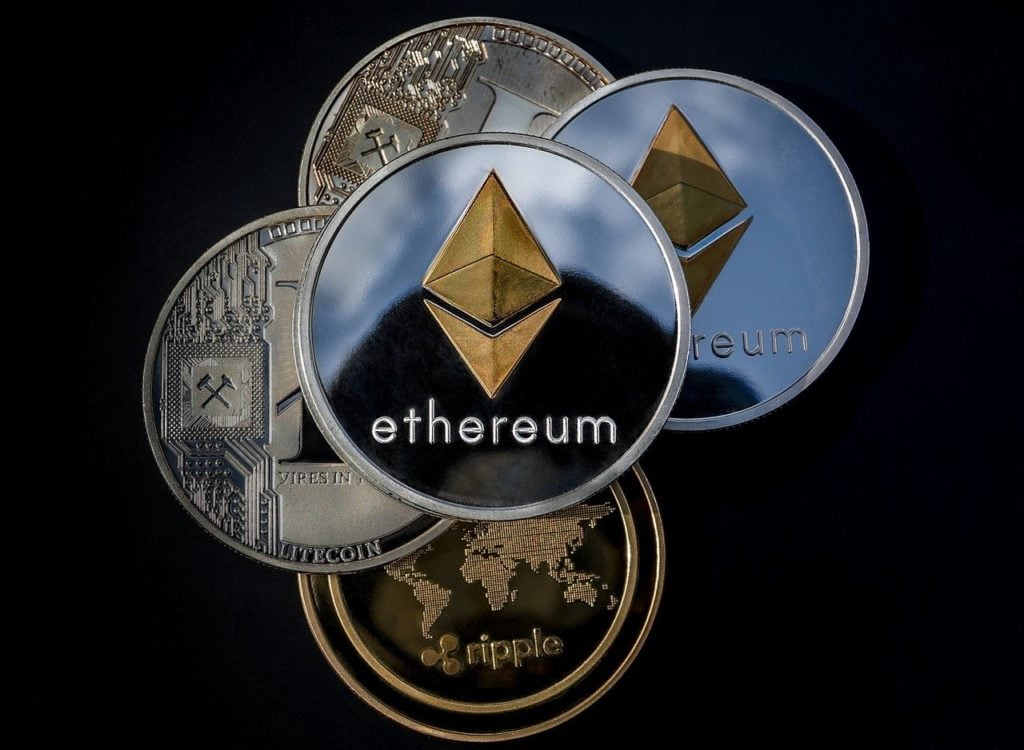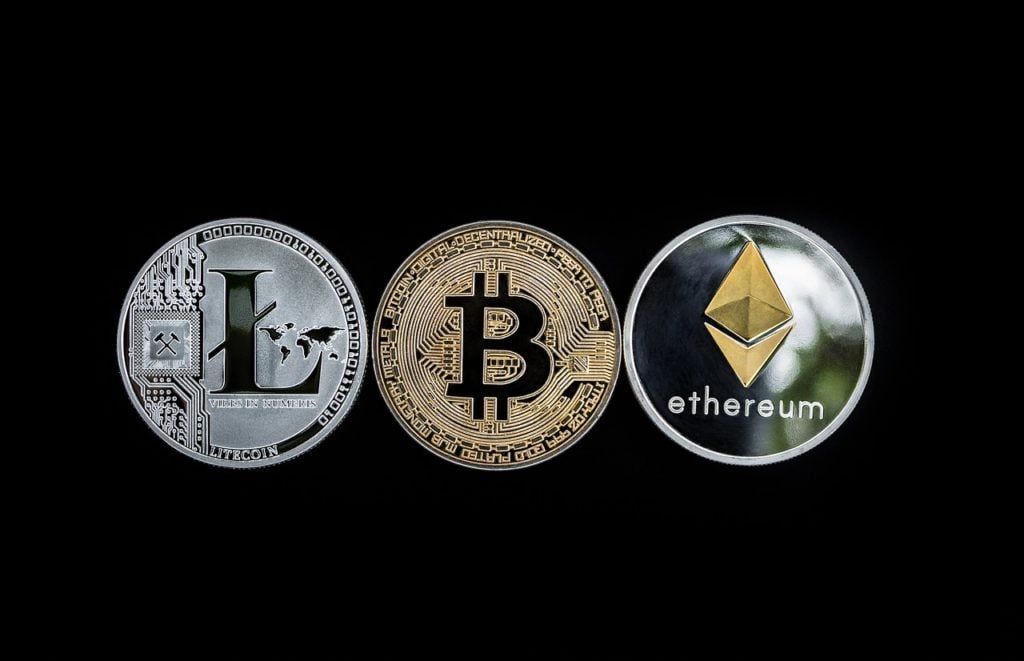According to the current running total on cryptocurrency price aggregator CoinMarketCap, there’s over 9,000 types of cryptocurrency in the crypto market today. However, since the emergence of NFTs and DeFi swapping platforms like Uniswap, there are now thousands more unaccounted for.
This in-depth guide explains the basics about each type of cryptocurrency asset, and what each category of coins has to offer investors, users, and the future of finance.
From A To Bitcoin To Z: Introduction To The Different Types of Cryptocurrency
As Bitcoin has shown, not all cryptocurrency assets are created equal. Some are spin offs or forks of Bitcoin attempting to dethrone the king, while others attempt to carve out their own niche in the market with added features like smart contracts, borrowing, lending, yield farming, and more.
Behind Bitcoin, is Ethereum, the top altcoin in the cryptocurrency market in which most other tokens are built on. Beyond the two heaviest hitters, the remaining list of the top ten crypto assets by market capitalization is always changing due to how young each technology is and how volatile the speculative asset class is.
Time has shown that even when projects appear to be useless, upgrades can be launched that change features and raise the stakes and increase interest and demand/ Coins with longevity can also go through phases of negative sentiment, causing them to underperform other assets.
Knowing the ins and outs of what each of the various types of cryptocurrency have to offer helps investors sort through real value versus speculative hype.

Altcoins: Alternative Cryptocurrencies and Bitcoin Alternatives
As previously mentioned, Ethereum is the top altcoin in the crypto market currently, and is the layer one blockchain protocol in which most tokens are built on. DeFi tokens adopt the ERC20 token standard, while NFTs rely on the ERC719 standard instead.
Altcoins go through phases called “alt seasons’ where these alternatives to Bitcoin outperform BTC by a large margin. A proper altcoin season hasn’t happened since early 2018, and when it does, incredible wealth can be generated.
However, when sentiment shifts negative on these altcoins, they can correct by as much as 99% of all gains. Even Ethereum fell by well over 90% during the last bear market from $1,400 to $80 at the low.
Still, several altcoins hold incredible promise and offer a bevy of features and benefits beyond what Bitcoin or even Ethereum can offer to investors.
Tokens: Smart Contracts, DeFi And Much More
Tokens are a crypto asset that often come with added benefits. DeFi tokens, for example, let users stake these tokens on protocols to receive staking rewards. Lending and borrowing can also be enabled using tokens.
Tokens can also represent ownership of other goods, such as tokenized stock shares, tokenized art, such as NFT, and more.
Payment Currencies: Pay For Goods And Services With Crypto
Bitcoin began its life as a payment currency, and payment currencies like Bitcoin can be used to exchange easily for goods and services across the internet globally.
These borderless currencies allow users to interact with the blockchain themselves to make payments, rather than needing to rely on a third party like a bank, Western Union, PayPal, or others.
However, merchant services are rare, and users of cryptocurrencies don’t often spend these types of cryptocurrency on goods or services, and instead HODL or trade these coins.
Privacy Coins: Protecting Your Identity And Obfuscating Transaction Details
Monero and similar currencies fall under this category, both offering the same cryptographic and scarce supply benefits of Bitcoin, but containing added code that can fully or partially obfuscate transaction information such as sender, receiver, amount and more.
These types of coins are vehemently opposed by most modern governments due to their potential usage related to international money laundering and other crimes.
For example, Monero is the coin most associated with cryptojacking – a type of crypto mining malware – and dark web marketplaces now that Bitcoin has fallen out of popularity there. The White House Market recently ditched Bitcoin and uses Monero as its primary payment method.
With governments against these coins, however, they’ve struggled as investment vehicles compared to the rest of the crypto market. They still offer users a ton of important benefits, such as anonymity and enhanced privacy, and their use case is likely to increase as criminals move toward cyberspace.

Blockchain Economies: The Building Blocks Of The Future
Blockchain economies are platforms that have developed into their own ecosystems that vary greatly in size. Perhaps the best example of such a blockchain economy currency is Ethereum itself.
DeFi tokens built on the Ethereum ERC20 standard all require ETH to pay for gas fees when making transactions. Trading on Uniswap, moving coins and more, all require ETH. The constant demand for ETH in this way is what has greatly contributed to its price appreciation over the last several years.
But there’s still plenty of room for other blossoming blockchain economies to take over. Cardano, Solana, Polkadot, EOS and more are all gunning for Ethereum – all while ETH gas fears are out of control and users are beginning to get fed up.
Utility Tokens: Unlocking Platform Value Through Tokenization
Utility tokens are tokens that can be used in some way to unlock additional value on a platform or protocol. An example of a utility token is the COV token, which powers the copy trading platform.
With COV tokens, users can enjoy benefits such as zero entry fees, increased profit share split, discounted trading fees and much more. Adding value to the token, copy trading also burns tokens regularly from the fees of copy trading, minus any operating expenses.
These token burns and the utility via the copy trading platform increase demand, reduce supply, and push the coin to favor price appreciation in the long term.
Stablecoins: Coins Backed By Assets Like Cash, Gold, And Other Commodities
Stablecoins have exploded in their use and demand, but not in their value. As part of their namesake, their value typically remains stable with whatever asset they’re tied to, hence the stable moniker.
Stablecoins like USDC, and USDT – the two stablecoins offered as margin accounts on PrimeXBT in addition to BTC and ETH – are backed by a corresponding dollar and therefore tied to the value of USD.
Other stablecoins are backed by other world currencies, commodities, gold, and much more. There are even cryptocurrency stablecoins that rely on an algorithm or even another cryptocurrency asset to help maintain stable pricing.

Major Cryptocurrencies: Bitcoin And Other Cryptocurrencies In The Top Ranks
The most important cryptocurrencies in the market are found in the top ten to twenty coins. There are gems much lower down the list, of course, however, for among the more safe investments in the risky asset class, the top ten or around there is the best place to turn.
Bitcoin is in the top spot, with Ethereum right behind it. Ripple and Litecoin have maintained a spot in the top ten for nearly a decade, but have since struggled to stay in due to currently trending coins.
But trending coins come and go, so we’re breaking down which crypto assets are most likely to stick around for years to come.
Bitcoin: The Most Popular Cryptocurrency
Bitcoin is the number one cryptocurrency by market cap, now worth more than $1 trillion across all coins. The first ever cryptocurrency and first instance of blockchain technology is what started the entire industry.
Dozens of Bitcoin forks and knockoffs exist, but there’s only ever been one true Bitcoin (BTC). Bitcoin is working on becoming a store of value, as it becomes adopted by institutions and corporations. However, it is still currently a speculative asset and therefore better for traders to take advantage of instead of HODLing or other methods.
Bitcoin goes through periods where investors think that altcoins will beat it, but eventually, Bitcoin proves them wrong, and sentiment turns negative on altcoins in general. This is called Bitcoin maximalism, while when altcoins are in favor, it’s called an alt season.
Litecoin: Digital Silver And Forgotton Altcoin
It’s often not a proper altcoin season until Litecoin explodes in value, and that could be what’s missing from the current bull market. Bitcoin has set new all-time highs, and so has Ethereum, but Litecoin has been left behind.
Soon, however, its long-term value will begin to outshine the lingering negative sentiment. Unlike Bitcoin forks, Litecoin which still relies on Bitcoin’s code, expands the supply to 84 million LTC, maintaining scarcity, but improving speed and making the cost per coin cheaper.
A lower cost is attractive the more expensive Bitcoin gets. Litecoin also gets the name digital silver, next to Bitcoin as digital gold. Interestingly, silver didn’t follow gold’s bull market, and Litecoin hasn’t followed Bitcoin’s. Is there more to the digital silver theory after all?
Ripple: The XRP Token, And The SEC Vs Ripple Lawsuit
The primary differences in cryptocurrencies like Ripple versus Bitcoin, is that XRP, the native token to the Ripple protocol, is a centralized coin.
Bitcoin, Ethereum, and others on this list are decentralized, while a large portion of the XRP supply is held by parent company RIpple. Ripple also maintains some control over the protocol.
Because of the distribution model, Ripple is currently locked in a legal battle with the SEC, asserting that the company sold unregistered securities when it offered XRP tokens to investors.
Ethereum: The Top Altcoin In The Market
Unlike other currencies like Bitcoin, Ethereum also includes smart contracts. The benefits of this have been widely discussed throughout this guide, including NFTs, DeFi coins, and how the blockchain economy itself is booming.
Ethereum has begun its ETH 2.0 upgrade recently, helping to address the ongoing scaling issues that have been plaguing the crypto market recently. The lack of throughput has caused ETH gas fees to soar, passing the buck, literally, to users to shoulder.
It hasn’t impacted prices just yet, however, it has allowed other coins such as Polkadot to enter the ranks of the crypto top ten as other foundational protocols begin to develop further.
EOS: The Ethereum Killer On Pause
EOS is one of those foundational layer technology tokens that have the same power that Ethereum has, and was initially dubbed as an Ethereum killer. EOS, however, has mostly been silent in terms of developments around the project, new developers onboarding, or price action.
EOS hasn’t set a new all-time high and has sunk down the list of coins, but given its enormous backing and the fact that something has been brewing for a long time, its return to prosperity is long overdue, and could make for an incredible ROi when it gets rolling again.
Forks: The Descriptions And Differences Investors Must Understand
Bitcoin was the first ever cryptocurrency, but throughout time, either due to a split in the community or due to someone trying to create a franken-coin to beat the original, several times Bitcoin has been “forked”.
A fork isn’t exactly what you might think, and there are two types of forks out there. Here are the key differences of each.
Hard Forks: Two Chains, Two Coins
Hard forks, for example, Bitcoin Cash, Bitcoin SV, and others, are new blockchain paths created after a split in the chain. The original blockchain lives on as BTC, while the new blockchain created then is represented by the new asset, for example, BCH.
Hard forks result in the user of the forked coin now owning an equal portion of each type of coin, making forks beneficial for the HODLer, even if they don’t agree with the reason for the hard fork. The Bitcoin Cash hard fork currently is the most notable fork in history, but as time has shown, it failed to overtake the original Bitcoin, even though that was the intention.
Soft Forks: A Split In The Software
A soft fork involves a change to the underlying protocol and software making the previous blockchain blocks invalid, and launching a new chain that is backwards compatible with all nodes and assets.
Summary: Trade CFDs for Popular Cryptocurrency CFDs at PrimeXBT With BTC, ETH, and Stablecoins
Bitcoin, Ethereum, Litecoin, EOS, and other cryptocurrencies are still mostly a speculative asset class although they are gaining more widespread adoption with each passing day. These assets are still several years away from becoming reliable stores of value, and still are too volatile for savings or spending.
In the future, this will change, but for now, cryptocurrency trading is the ideal way to maximize ROI from these investments, and allow investors to more actively manage against the risk associated with cryptocurrencies.
As mentioned throughout the guide, both Bitcoin and altcoins can be extremely profitable during bull markets, but during bear markets can lose anywhere from 80% to 99% of their value, making them both risky to investors, but extremely attractive for traders who can short Bitcoin and other coins.
By using the award-winning CFD trading platform PrimeXBT, users can deposit BTC, ETH, USDC, and USDT to trade any of more than 50 different instruments under one roof.
The platform offers Bitcoin, Ethereum, Litecoin, EOS, Ripple, and more, alongside traditional assets like gold, oil, stock indices, forex, and more.
Registration is simple and quick, and requires no minimum deposit to begin trading. The platform offers 24/7 customer service, a blog with tons of helpful information, and much more.
How many types of cryptocurrencies are there?
According to the most recent figures from CoinMarketCap, there are now over 9,000 altcoins alongside Bitcoin. However, thanks to Uniswap and NFTs, this number is barely scratching the surface of just how many different types of cryptocurrency coins are out there today.
What are the top 5 Cryptocurrencies?
The top ten crypto coins tend to change somewhat frequently, while the top five cryptocurrencies offer a more reliable return on investment due to better visibility and greater interest. But even the top five have had a shakeup recently, with Ripple’s XRP falling out of favor for the first time in years. Currently, the top five by rank are Bitcoin, Ethereum, Binance Coin, Tether, and Cardano.
What kind of currency is bitcoin?
Bitcoin is a cryptocurrency, created by the mysterious Satoshi Nakamoto to be the first ever form of peer-to-peer, digital cash. All other cryptocurrencies created after Bitcoin, are called altcoins. More specifically, Bitcoin is considered a payment currency, however, it is developing into a store of value as volatility dwindles over time.
Which type of cryptocurrency is the best?
When it comes to Bitcoin vs other cryptocurrencies, none of the other types of cryptocurrency can compare to the size of Bitcoin’s market cap and the continued demand for BTC.
The content provided here is for informational purposes only. It is not intended as personal investment advice and does not constitute a solicitation or invitation to engage in any financial transactions, investments, or related activities. Past performance is not a reliable indicator of future results.
The financial products offered by the Company are complex and come with a high risk of losing money rapidly due to leverage. These products may not be suitable for all investors. Before engaging, you should consider whether you understand how these leveraged products work and whether you can afford the high risk of losing your money.
The Company does not accept clients from the Restricted Jurisdictions as indicated in our website/ T&C. Some services or products may not be available in your jurisdiction.
The applicable legal entity and its respective products and services depend on the client’s country of residence and the entity with which the client has established a contractual relationship during registration.




